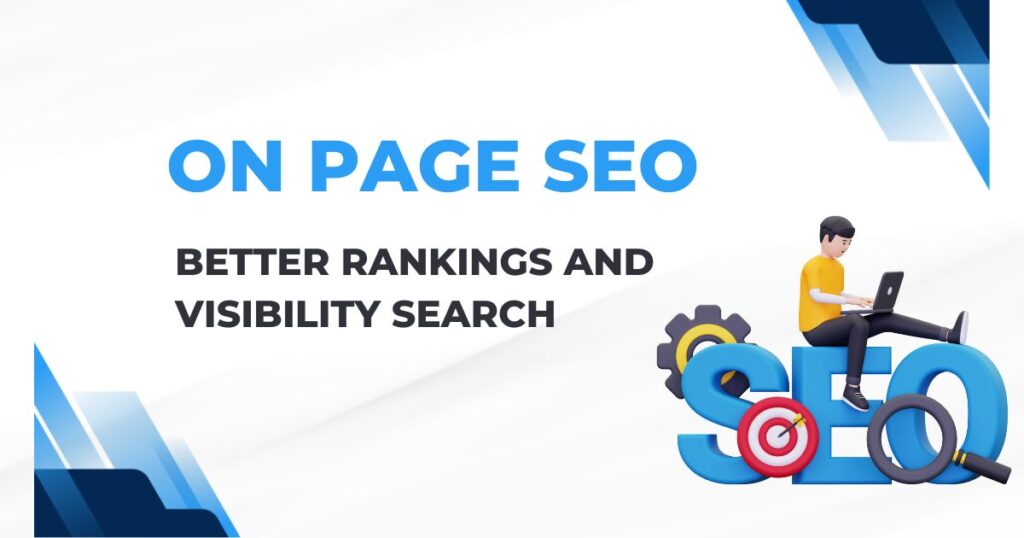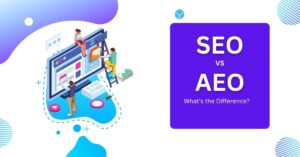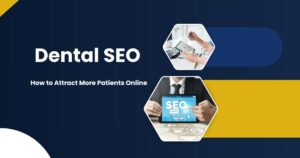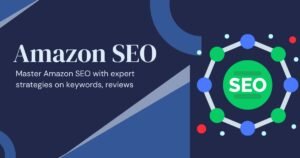Mastering On Page SEO for Better Rankings and Visibility

Online visibility begins with more than just a great website. Effective On Page SEO is your ticket to ranking higher in search results, improving user experience, and driving meaningful traffic to your site. But what is on-page SEO, and how can mastering it give you the edge over competitors?
Understanding On-Page SEO
When it comes to on-page SEO, everything from the content published on your website to the structure and even HTML of web pages may be optimized for search engine rankings. This method is also known as “content re-editing”.
On-page SEO is entirely in your hands, in contrast to off-page SEO. This means it forms the base pillar in an overall SEO strategy. Get your on-page SEO right and you’ll have laid a solid foundation for achieving all goals of achieving visibility online.
Why On-Page SEO Is Important
- Search Engine Understanding
Search engines use on-page SEO signals to determine what your content is about and how relevant it is to user queries. Clear optimization allows search engines like Google to better index and rank your site.
- Improved User Experience
A well-optimized webpage isn’t just about search engines; it enhances the experience for visitors too. Clear, engaging content paired with fast loading times and mobile-friendliness keeps users on your page longer.
- Synergy with Off-Page SEO
While off-page SEO tactics like earning backlinks and mentions are indispensable, they work far better when combined with strong on page SEO. Search engines reward websites that excel in both areas.
The Key Pillars of On-Page SEO
Keyword Optimization
Keywords are at the heart of any on-page SEO strategy. When done correctly, they can drive the right audience to your site.
- Identify the Right Keywords: Use tools like Google Keyword Planner or SEMrush to uncover terms that potential customers search for most often.
- Place Keywords Strategically: Incorporate keywords naturally into your title, meta descriptions, headers, and body text. Avoid overstuffing as it can harm readability and lead to penalties.
- Focus on Latent Semantic Indexing (LSI): Modern search engines prefer content that’s context-rich. Include related terms and synonyms to help search engines understand the breadth of your content.
Title Tags and Meta Descriptions
Your title tags and meta descriptions are like digital billboards for your site. They not only signal relevance to search engines but also entice users to click.
- Compelling Titles: Keep them under 60 characters to avoid truncation, and ensure each title contains your main keyword.
- Engaging Meta Descriptions: These should be under 160 characters and give a concise summary of the page, with a clear call to action like “Learn more” or “Get started.”
Headings and Subheadings
Proper headings (H1, H2, H3) don’t just improve readability but also help search engines understand your content’s structure.
- Use one H1 tag per page with a central keyword.
- Divide your content with H2 and H3 tags for clarity and better organization. Remember, search engines reward well-structured content.
Content Quality
Your content’s relevance is the biggest factor in on-page SEO. It needs to address users’ queries while being engaging and easy to read.
Here’s how to create content that ranks:
- Answer Search Intent: Know what users are looking for when searching your target keyword and provide straightforward, detailed answers.
- Use Visuals: Break up large blocks of text with images, infographics, and videos that provide additional value.
- Add Value: Offer insights or solutions not readily found elsewhere. Original research, case studies, or unique takes can set your content apart.
URL Structure
A clean, descriptive URL is essential for good on-page SEO as it aids both users and search engines.
- Keep It Simple: URLs should be easy to read and include your keyword (e.g., www.example.com/on-page-seo-guide).
- Avoid Numbers and Special Characters: Stick to text only.
Internal Linking
Internal links direct users to other relevant pages on your website, improving usability while also spreading link equity across your site.
- Use anchor text that naturally blends into the content.
- Link to essential pages like services, blog posts, or your contact page.
- Avoid overloading pages with too many internal links.
Mobile-Friendliness
Search engines like Google prioritize the mobile version of your site when determining rankings. Responsive design and fast load times are non-negotiable.
- Run the Mobile-Friendly Test by Google: This can identify areas for improvement.
- Prioritize Core Web Vitals: Google’s three main metrics center around user experience and site speed.
Faster Load Times
Page speed can significantly impact bounce rates and user satisfaction, affecting your rankings.
Steps to improve load times:
- Compress images without sacrificing quality.
- Minify CSS, JavaScript, and HTML.
- Use a caching plugin or a Content Delivery Network (CDN) for better performance.
How On-Page and Off-Page SEO Work Together
While on-page SEO forms the foundation, off-page efforts propel your website higher up in rankings. For example, great content optimized with keywords (on page) naturally attracts more backlinks (off page). A cohesive strategy combining both ensures you grow sustainably and effectively.
Simple Tools to Help with On-Page SEO
- Yoast SEO Plugin (WordPress): For title tags, meta descriptions, readability, and keyword density.
- Google Search Console: To check indexing and on-page performance.
- Screaming Frog: A robust tool to audit on-page SEO elements quickly.
Actionable Steps to Get Started Today
- Audit your site for its current on-page SEO status.
- Optimize metadata, headings, and URLs for key pages.
- Create a content calendar that emphasizes search intent and high-quality writing.
- Regularly test and refine mobile performance and load speed.
By doing the above, you’ll not only boost your site rankings but also create a better experience for users.








